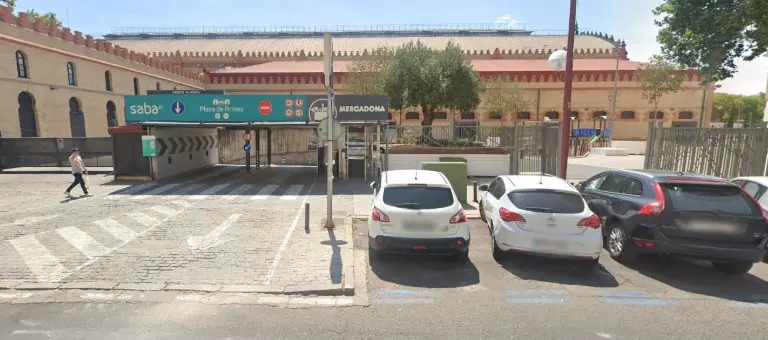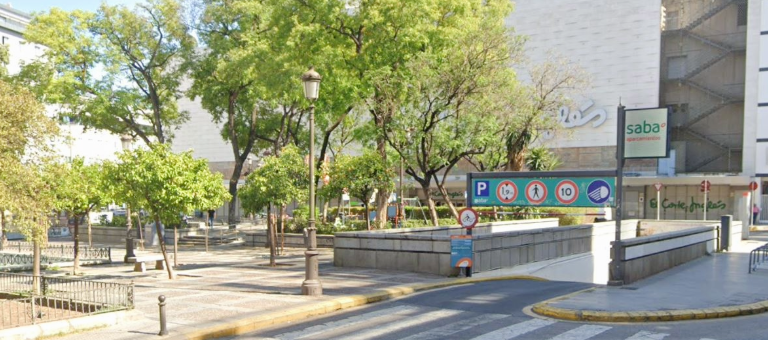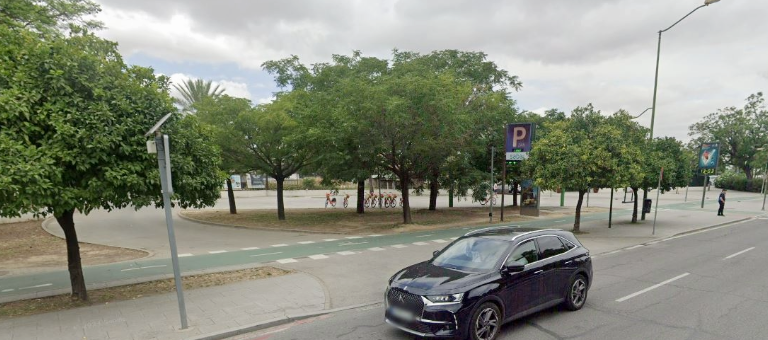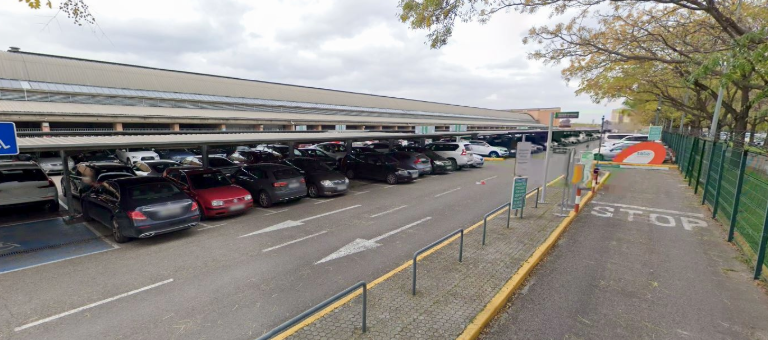
Parkings in San Pablo, Seville
In the past, Calle San Pablo was home to the Dominican convent of San Pablo. Nowadays, it runs through three neighbourhoods of Seville: Museo, El Arenal and Alfalfa. Parking in a car park in San Pablo in Seville is ideal for exploring the old town.
-

-

-

-

-

-

Parking Saba Sevilla- Santa Justa Train Station P1 and P3
Avenida de Kansas City, s/n, 41007, Seville
3.3 €
Where to park near the San Pablo area?
If you want to find a car park in San Pablo in Seville, the best option is to park at the Saba Plaza de Armas car park. It is located on Calle Marqués de Paradas, 41001, just a 7-minute walk away.
This long-stay car park is open 24 hours a day and has mobile phone coverage, ensuring efficient communication. It also cares about accessibility, providing reserved spaces for people with reduced mobility, to provide comfort to all its customers. The maximum height for vehicles to access is 2 metres.
To get to Calle San Pablo, take the Real Parroquia de Santa María as a reference point, as its southern side is adjacent to it.
What to do around Calle San Pablo?
Seville is one of the most famous cities in the world. This means that it is constantly busy with vehicles and the streets are full of people all day long. The best way to visit the city without worrying is to book at the Saba Plaza de Armas car park using the Saba app to ensure you have a guaranteed parking space. Here are some of the most important points of interest in San Pablo.
Seville City Hall
Seville's City Hall, an example of Plateresque architecture in Andalusia, was erected in the 15th century as the new seat of the Cabildo, marking the independence of civil and religious power. It was built in the Plaza de San Francisco and its initial construction extended to the southern sector of the current building.
During the 19th century, the convent of San Francisco faced military occupation, several fires and exclaustration. The construction of the town hall was completed in 1867 with outstanding artistic and historical elements. If you visit it, you will be able to see Renaissance and neoclassical areas, such as the monumental Sala Colón, currently used as a plenary hall and for civil weddings.
Church of Santa María Magdalena
The church of Santa María Magdalena is a Catholic temple in the Baroque style, built between the end of the 17th century and the beginning of the 18th century by Leonardo de Figueroa. It is the former church of the convent of San Pablo el Real and was declared an Asset of Cultural Interest in 1970.
It currently serves as the canonical headquarters for several brotherhoods, including the Hermandad Sacramental de la Magdalena, the Hermandad de Nuestra Señora del Amparo, the Hermandad de la Quinta Angustia and the Hermandad del Calvario.
The Church of Santa María Magdalena has a main stone façade, now oriented towards calle Cristo del Calvario. It features a rose window with blue ceramic rosary beads, surrounded by a wreath of flowers. The façade includes a balcony with belfries on the sides and a central entrance. On the epistle side, there are three entrances with sculptural details and the dome of the transept, designed by Figueroa, is the first in the city on an octagonal drum.
Museum of Arts
The Seville Museum of Arts was inaugurated in 1841 and has expanded since its origins with works that were confiscated. A standout among Spanish art galleries, it has 14 chronological rooms that narrate the artistic history of the country, with paintings and sculptures from different regions.
Focusing on the Baroque period, the collection includes religious works from the ecclesiastical disentailment. Notable artists include Zurbarán, Goya, El Greco and Juan de Valdés Leal, with Murillo being the star of the museum. It is a highly recommended visit because it is located in the centre of Seville and has a very accessible entrance.
























 Spain
Spain
 Portugal
Portugal
 Italy
Italy
 Chile
Chile
 United Kingdom
United Kingdom
 Germany
Germany
 Czech Republic
Czech Republic
 Slovakia
Slovakia
 Catalan (CAT)
Catalan (CAT)